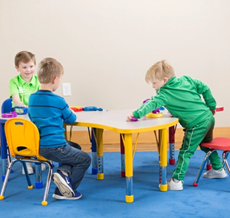← View All Buying Guides


Preschool Chair Buying Guide
School Outlet’s Tips
-

Ergonomics and Size
-

Durability and Material
-

Safety Features
-

Stackability and Storage
-

Aesthetics
-

Cost and Budget
Preschool Chair Styles
-

ECR4Kids Hardwood Stackable Toddler Chairs
-

ECR4KidsPlastic Stack Chair
-

Mahar Preschool Classroom Chairs
-

Virco 9000 Series
-

Virco 2000 Series
-

VircoZuma Series
-

Jonti-CraftChairs
-

FuerzaPreSchool Chairs
-

FuerzaPreSchool Chairs w/ Ball Glides
-

Flash FurnitureBudget PreSchool Chair
-

Flash FurniturePlastic Preschool Chair
-

Flash FurnitureKids Folding Chair
-

Flash FurnitureTable & Chair Sets
-

ECR4KidsBentwood PreSchool Chairs
-

ECR4KidsWood Ladderback Chairs
-

Jonti-Craft KYDZWood Ladderback Chairs
-

Jonti-CraftToddler Wood Chairs
-

N2 series
-

Zuma Rocking Chairs
-

Zuma Cantilever Chairs
-

Jonti-Craft Chairries
-

Virco 9600 Series
-

Virco 2600 Series
-

FDP Preschool Chair
-

Whitney BrothersWooden Chairs
-

FuerzaStack Chairs




























